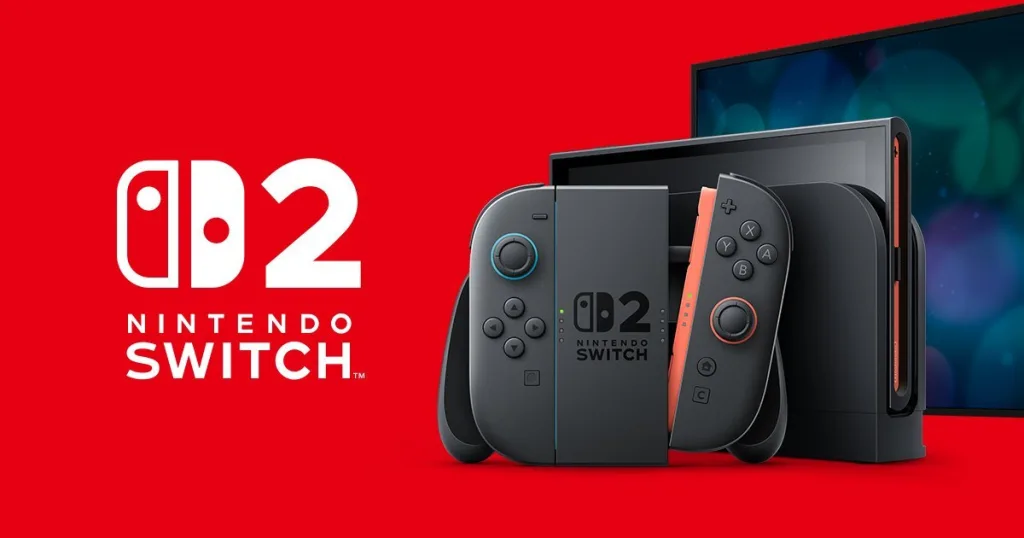
Forget “solid launch.” Switch 2 is dropping numbers that belong in Olympic track meets, not console sales ledgers. Let’s dissect the frenzy, the tech, and the ripple effects—then peek at what could come next.
Nintendo confirmed 3.5 million consoles sold worldwide in the first four days after its 5 June release, officially crowning Switch 2 the fastest-selling Nintendo system in history. Crunch that:
- 875 000 systems per day
- ≈ 36 458 per hour
- ~600 Switch 2s leaving stores every minute
For perspective, PlayStation 4’s once-vaunted “best day ever” record (1 million day-one units) has been obliterated; Switch 2 reportedly flirted with three million sales on day one alone.
• Spain: 108 000 units opening weekend—double the previous PSP record
• UK: 160 000+ in week one—biggest Nintendo launch ever
• France: 200 000 day-one—fastest-selling gaming device in French history
These pockets of demand signal universal appetite, not a single territory spike.
Let’s recall:
| Spec / Feature | Switch (2017) | Switch 2 (2025) |
|---|---|---|
| Display | 6.2″ 720 p LCD @60 Hz | 7.9″ 1080 p OLED @120 Hz |
| Docked Output | 1080 p | 4K |
| CPU/GPU | Tegra X1 | Custom NVIDIA “NVN 3” chip (DLSS-style upscaling) |
| Controllers | Slide-on Joy-Con (drift-plagued) | Magnetic Joy-Con 2 + Hall-effect sticks |
| Online Comms | Phone-app kludge | GameChat 2 built-in voice/video |
The original Switch promised console-quality gaming anywhere; Switch 2 finally supplies the horsepower to keep that promise in 2025’s 4K, 120 Hz world.
With that being said…Day-one exclusives are modest—Mario Kart World, Switch 2 Welcome Tour, and a slew of upgraded ports—but the install base ballooned anyway. Why?
- Back-compat: 130 million-strong Switch library boots natively.
- Handheld horsepower: Cyberpunk 2077 legitimately playable on a train without melting frames.
- eSports/Speedrun buzz: Pokémon Scarlet & Violet runs are already 25-minute faster on the new silicon.
Nintendo has basically sold potential: buyers know Zelda, Pokémon, and Smash will turn up later, and they want to be ready.
Despite pre-launch production ramp-ups and even shipping “Out of Stock” signage to stores, inventory vanished instantly at GameStop, Walmart, and Target. Online restocks have been measured in seconds, not hours. Expect:
- Rolling “micro-drops” every Wednesday-to-Friday as shipments clear customs.
- A calmer channel in late July once Donkey Kong Bananza ships and Nintendo’s second manufacturing wave lands.
The $449.99 base / $499.99 Mario Kart bundle × 3.5 million equals roughly $1.57 billion in weekend hardware revenue alone. Software attach rates (Mario Kart bundle, digital upgrades) push the haul even higher—before accessories.
Looking at the competetion, Sony and Microsoft suddenly face a portable 4K-capable rival with first-party IP that historically converts casuals. Switch 2’s blitz may:
- Accelerate a PS5 “Slim Portable” rumor cycle.
- Force Xbox to double-down on cloud/hybrid handheld concepts.
- Pressure Valve to price-cut or fast-track a Steam Deck OLED 2.
What Could Slow Momentum?
- AAA drought: If December arrives without Zelda or a genuine new Mario 3D, momentum could wobble.
- Supply chain hiccups: Another chipset shortage would rerun 2020-era frustration.
- Price sensitivity: $449 isn’t pocket change; a global recession could pinch second-wave buyers.
And will al this, there are some that are giving som predictions, including 15 million units by March 2026 (based on Nintendo’s own forecast) feels conservative; at current velocity, 18-20 million is feasible, all with a first-party blockbuster will arrive by fiscal Q3 to keep attach rates high and it is suggested that we are talking about Metroid Prime 4.
Also, Nintendo will launch an “XL Dock” with integrated NVMe storage and Wi-Fi 7 to entice 4K-TV owners and finally, some predicts that by 2027, Nintendo Switch 2 could flirt with the DS’s 154 million lifetime crown if momentum endures.
Switch 2 isn’t merely repeating the Switch playbook; it’s hitting numbers that redraw the entire launch-era curve. Hybrid gaming is no longer a quirky niche—it’s the growth vector, and Nintendo currently owns the lane.

